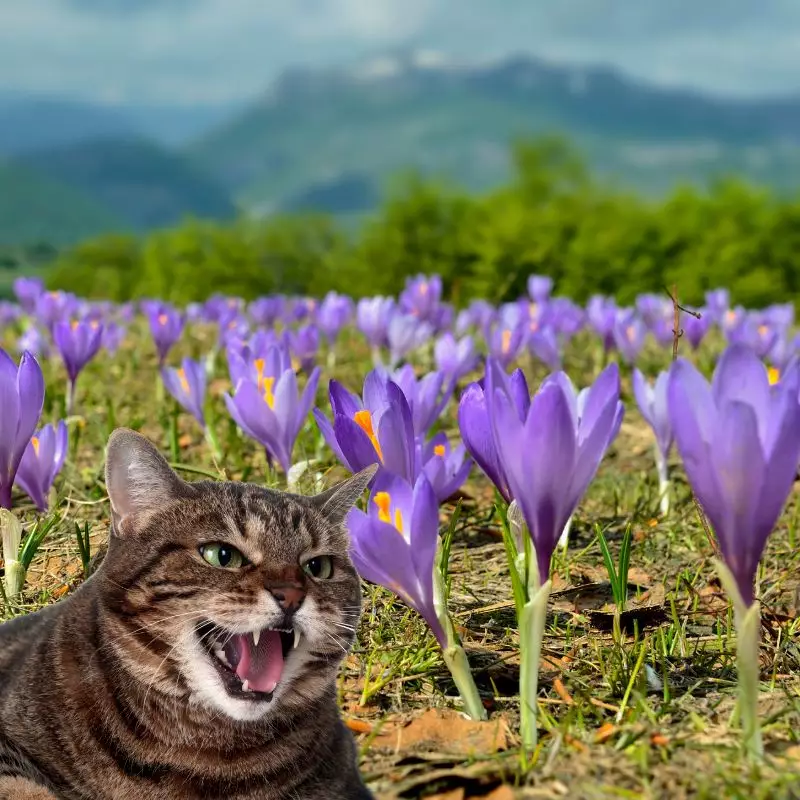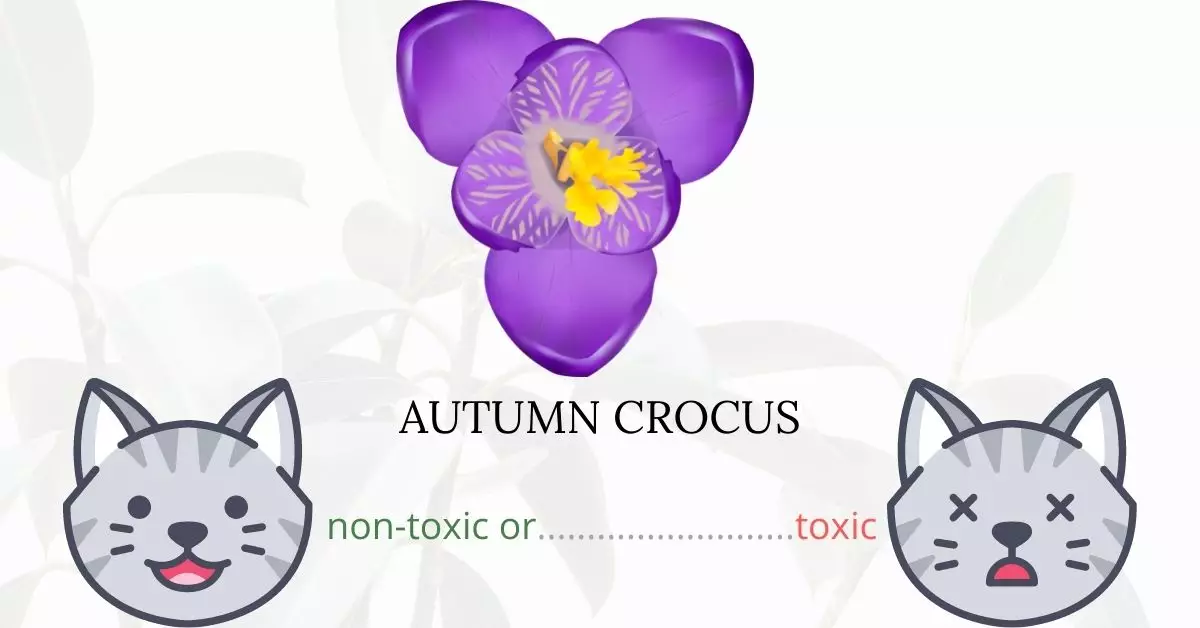Absolutely, the Autumn Crocus is toxic to cats.
This article was written in collaboration with a team of experienced DVMs (doctors of veterinary medicine). Leveraging their expertise and insights, we are able to provide accurate and up-to-date information regarding the potential risks associated with various plants, specifically the Autumn Crocus in this context. Furthermore, we have cross-referenced our findings with high-authority websites such as ASPCA and PetMD to ensure the utmost accuracy.
Commonly known as meadow saffron or naked ladies, the autumn crocus is a decorative plant that blooms in the fall. While it may be a delightful addition to gardens, it poses significant risks to felines due to its content of colchicine and other alkaloids. If ingested, the autumn crocus can induce severe gastrointestinal distress and cause damage to multiple internal organs in cats.
Clinical Signs of Autumn Crocus Poisoning in Cats

When a cat comes into contact with, smells, or ingests the Autumn Crocus plant, certain clinical signs may become evident. Understanding why these symptoms occur can help cat owners recognize and act upon them quickly. Here’s a breakdown of each sign and the underlying cause:
- Anemia: The toxins in Autumn Crocus can interfere with the cat’s ability to produce healthy red blood cells, leading to a decreased count.
- Bloody stool: The plant’s toxins can cause gastrointestinal bleeding, resulting in bloody feces.
- Burning sensation in the mouth: Alkaloids present in the plant can irritate the mucous membranes, causing a burning sensation.
- Death: In severe cases, the cumulative effects of the toxins can lead to fatality.
- Depression: The toxins can affect the cat’s central nervous system, leading to behavioral changes like depression.
- Diarrhea: The plant’s toxins can irritate the gastrointestinal tract, leading to diarrhea.
- Breathing problems: If inhaled or ingested, the toxins can affect the respiratory system, causing difficulty in breathing.
- Drooling excessively: The burning sensation or irritation in the mouth can lead to excessive salivation.
- Fever: As the body tries to combat the toxins, a fever might arise.
- Appetite loss: Gastrointestinal distress and general discomfort can lead to a decreased appetite.
- Organ damage: Prolonged exposure or large amounts of ingestion can result in damage to vital organs such as the liver, kidneys, and heart.
- Seizures: The impact on the central nervous system can lead to seizures.
- Shock: A severe bodily reaction to the toxins, which can be life-threatening.
- Slow heart rate: The toxins can depress the cat’s cardiac system, leading to bradycardia or a slowed heart rate.
- Vomiting (potentially bloody): Due to gastrointestinal irritation, a cat might vomit, which can sometimes contain blood if there’s internal bleeding.
If you notice your cat displaying any of these symptoms after potentially contacting or ingesting Autumn Crocus, it’s imperative to consult with a veterinarian immediately. The sooner the intervention, the better the outcome for your feline friend.
First Aid and Treatment of Autumn Crocus Poisoning in Cats

If you caught your cat chewing autumn crocus, remove the plant from his or her mouth and bring the remaining pieces to the veterinarian for further analysis. The vet may induce vomiting to eliminate toxins from your cat’s system. Activated charcoal may be also administered by the vet to absorb the remaining colchicine in your cat’s body. IV fluids and oxygen may be also given to your cat if he or she is suffering from vomiting and difficulty in breathing.
If days already passed by after the incident of autumn crocus ingestion, the vet may perform gastric lavage to remove the toxins from your cat’s stomach.
Recovery from Autumn Crocus Poisoning in Cats

Give your cat a calm and quiet space at home while he or she is recovering from autumn crocus poisoning. If your cat suffered from severe symptoms, it may take a little bit more time for him to recuperate. As long as your cat was given immediate medical attention and proper care, he or she will fully recover. You may be requested to come back to the veterinary office for follow-up check-ups particularly if your cat suffered from organ damage.
Prevention of Autumn Crocus Poisoning in Cats
Avoid areas with known autumn crocuses or if you have it at home, remove them right away. Get to know what plants are growing in the neighborhood to know what places to avoid. Keep your cats busy inside your homes by installing play fences and cathouses. You can also build fences and place safety nets around your home, as necessary. You may also grow cat-friendly grasses in your home to prevent your cat from nibbling and chewing other plants outside your home.
If you love plants but have cats at home, check out these lists:





